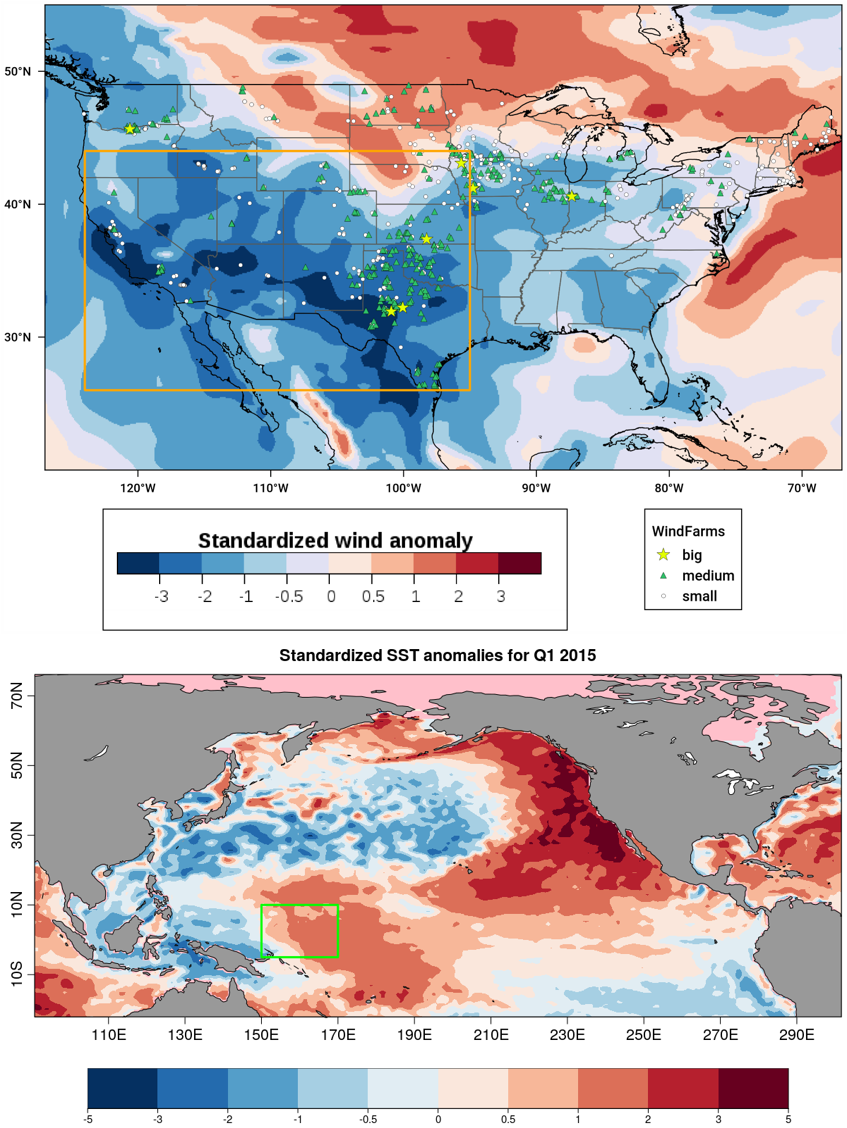During the first quarter of 2015 the United States experienced a widespread and extended episode of low surface wind speeds. This episode had a strong impact on wind power generation. Some wind farms did not generate enough cash for their steady payments, and the value of wind farm assets decreased. Although the wind industry expressed their concerns, the episode has not received much attention from the scientific community and remains poorly understood.
Journal of Geophysical Research publishes today the paper titled “Investigating the effects of Pacific sea surface temperatures on the wind drought of 2015 over the United States" by BSC researcher Llorenç Lledó and co-workers, part of the coordinating team of the European project S2S4E.
Using retrospective climate predictions, researchers find that high ocean temperatures in the western tropical Pacific Ocean played a central role to establish and maintain those wind anomalies. This is not a single event. The paper shows that the wind speed variability in the United States is not only dominated by El Niño but also by the ocean temperatures in this region of the Pacific. MareNostrum’s contribution has been key in this research, as the climate simulations that led to these conclusions have been run in the BSC supercomputer.
According to Llorenç Lledó, co-author of the paper,
This study helps energy companies to understand why 2015 had several months with weak winds. We highlight the relevance of the climate phenomena that have a direct impact on wind power generation.
Ongoing research at BSC within the S2S4E project will further evaluate the impact of climate variations on renewable energy resources. In the long run, research in this topic can be useful for industry stakeholders to anticipate disruptions in the renewable energy production.
DOI https://doi.org/10.1029/2017JD028019

Written by Martí Badal / BSC.
